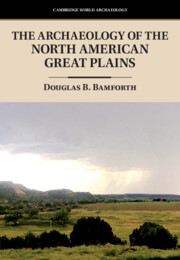Book contents
- The Archaeology of the North American Great Plains
- Cambridge World Archaeology
- The Archaeology of the North American Great Plains
- Copyright page
- Dedication
- Contents
- Figures
- Tables
- Acknowledgments
- Chapter 1 Introduction
- Chapter 2 Where and What Are the Great Plains?
- Chapter 3 Peopling the Continent, Peopling the Plains:
- Chapter 4 Paleoindian Hunters (and Gatherers):
- Chapter 5 Diversity, Environmental Change, and External Connection:
- Chapter 6 Mounds, Pots, Pipes, and Bison:
- Chapter 7 The Context of Maize Farming on the Great Plains
- Chapter 8 Settled Farmers and Their Neighbors, Part 1:
- Chapter 9 Settled Farmers and Their Neighbors Continued:
- Chapter 10 The Plains Village Period, Part 3:
- Chapter 11 One Promise Kept:
- Chapter 12 Afterword
- References
- Index
Chapter 2 - Where and What Are the Great Plains?
Published online by Cambridge University Press: 19 November 2021
- The Archaeology of the North American Great Plains
- Cambridge World Archaeology
- The Archaeology of the North American Great Plains
- Copyright page
- Dedication
- Contents
- Figures
- Tables
- Acknowledgments
- Chapter 1 Introduction
- Chapter 2 Where and What Are the Great Plains?
- Chapter 3 Peopling the Continent, Peopling the Plains:
- Chapter 4 Paleoindian Hunters (and Gatherers):
- Chapter 5 Diversity, Environmental Change, and External Connection:
- Chapter 6 Mounds, Pots, Pipes, and Bison:
- Chapter 7 The Context of Maize Farming on the Great Plains
- Chapter 8 Settled Farmers and Their Neighbors, Part 1:
- Chapter 9 Settled Farmers and Their Neighbors Continued:
- Chapter 10 The Plains Village Period, Part 3:
- Chapter 11 One Promise Kept:
- Chapter 12 Afterword
- References
- Index
Summary
Elsewhere the sky is the roof of the world; but here the earth was the floor of the sky.
(Cather 1966:232)The Great Plains which I cross in my sleep are bigger than any name people give them. They are enormous, bountiful, unfenced, empty of buildings, full of names and stories. They extend beyond the frame of the photograph. Their hills are hipped, like a woman asleep under a sheet. Their rivers rhyme. Their rows of grain strum past. Their draws hold springwater and wood and game and grass like sugar in the hollow of a hand.
(Frazier 1989: 214)Infinity was never an abstraction on the High Plains.
(Egan 2006: 40)- Type
- Chapter
- Information
- The Archaeology of the North American Great Plains , pp. 19 - 35Publisher: Cambridge University PressPrint publication year: 2021



